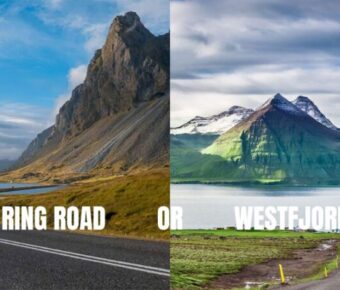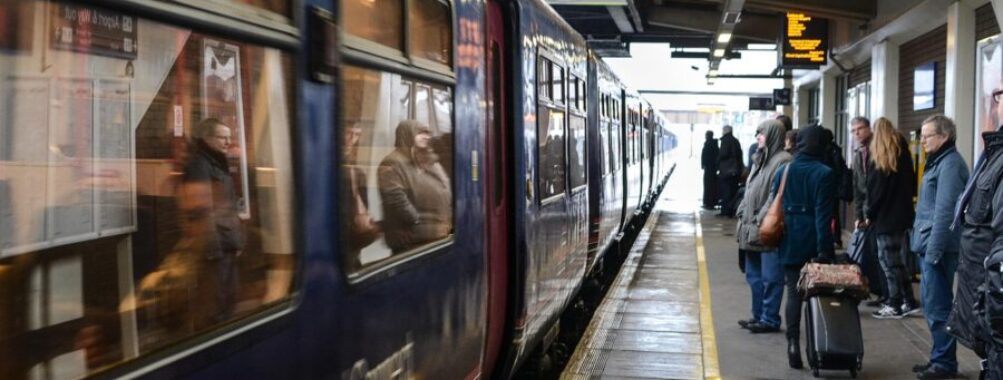
Train vs Bus Travel Carbon Footprint Europe: Which Saves More CO2 on Your Next Trip?
When you’re planning a trip across Europe, weighing the bus against the train isn’t just about comfort or price—it’s really about your impact on the planet. Trains almost always leave a smaller carbon footprint than buses for the same journey in Europe. Most travelers don’t even think about this until they start plotting out routes—at least, that was true for me the first time I backpacked from Paris to Berlin.
But if you’re curious about the numbers and want to know which option actually dents your emissions (or doesn’t), you’re in the right place. I’ve slogged through cramped overnight buses and breezed along on scenic trains, so I can tell you there’s more to it than just what’s on the ticket.
If you want to feel better about your next adventure—and maybe even save a little time—stick around. There are a few things I wish I’d known before my first big trip.
Table of Contents
- Key Takeaways
- Understanding Carbon Footprint in European Travel
- What Is a Carbon Footprint?
- How Carbon Footprint Is Measured in Passenger Transport
- Key Greenhouse Gases and Pollutants in Transportation
- Comparing Train and Bus Travel: Carbon Footprint Analysis
- Average Emissions Per Passenger-Kilometer
- Influence of Electricity Mix on Train Emissions
- Diesel vs. Electric Trains: Environmental Impacts
- Factors Affecting Bus Emissions
- Train Travel and Sustainability in Europe
- National Rail Networks and Cross-Border Connections
- Eurostar and Other High-Speed Rail Services
- Rail Travel as a Sustainable Choice
- Bus Travel’s Environmental Impact in Europe
- Urban vs. Intercity Buses
- Fuel Types: Diesel, Electric, and Hybrid Buses
- The Role of Coach Networks in European Mobility
- Comparing Trains, Buses, and Other Travel Modes
- Trains, Buses, and Aviation: Carbon Footprint Comparison
- Cars, Ferries, and Alternatives: Broader Perspective
- Impact of Domestic Flights and Short Haul Journeys
- Data Sources and Tools for Emissions Comparison
- Ecopassenger and Other Emissions Calculators
- European Environment Agency Data Insights
- European Green Deal and Policy Impacts
- Frequently Asked Questions
- What factors influence carbon emissions when comparing train and bus travel in Europe?
- How does the carbon efficiency of train travel compare to bus travel for long-distance journeys within Europe?
- Can opting for trains over buses significantly reduce a traveler’s carbon footprint?
- What advancements in train technology have been made to reduce CO2 emissions in European rail travel?
- How do occupancy rates affect the relative carbon footprint of traveling by train versus bus?
- What are the environmental benefits of using trains for freight instead of buses in Europe?
- Book Your Dream Experience
- More Travel Guides
Key Takeaways
- Train travel in Europe has a lower carbon footprint than bus travel.
- Both options still beat flying or driving when it comes to the environment.
- Understanding emissions helps you make greener travel choices.
Understanding Carbon Footprint in European Travel
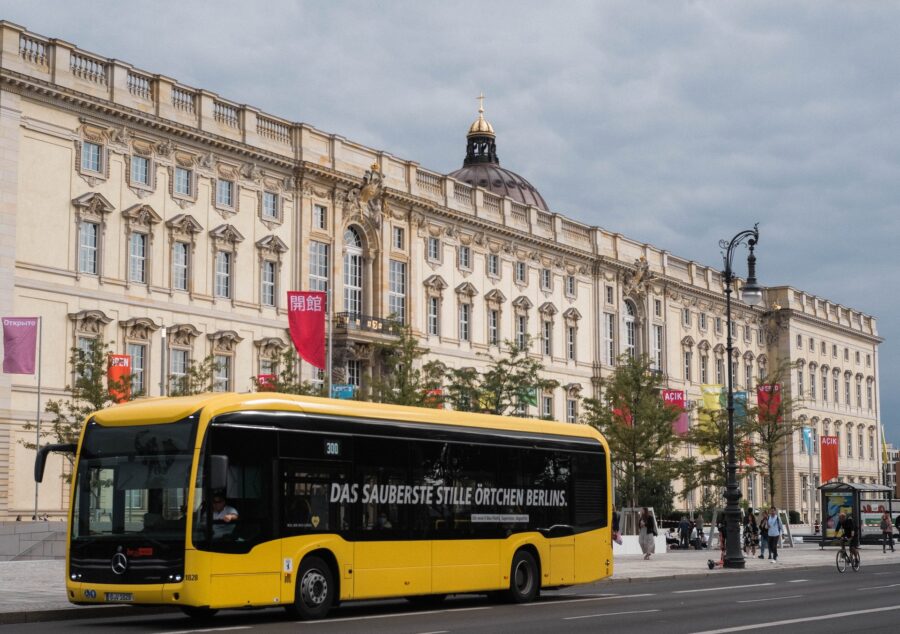
Your travel choices in Europe do more than shape your trip—they leave a mark on the planet. The way you get around affects your environmental impact, from the diesel engine of a bus to the electric wires powering a train.
What Is a Carbon Footprint?
A carbon footprint is the total amount of greenhouse gases, mostly carbon dioxide (CO2), released into the air as a result of your activities. It’s not just CO2—other gases sneak in too, but CO2 is the main one you need to worry about.
I think of my carbon footprint as this invisible travel buddy. It follows me from the moment I hop on a train or bus, all the way to my destination. Short trip, long haul, packed bus or nearly empty train—all those little details pile up into your personal carbon tally.
It’s a bit unsettling when you realize every kilometer you travel adds up. Sometimes I catch myself second-guessing that spontaneous city break.
How Carbon Footprint Is Measured in Passenger Transport
So, how do we actually measure this invisible footprint? No magic here. Experts use “CO2 equivalent” (CO2e), which bundles together all the major greenhouse gases—like methane and nitrous oxide—into one number based on how much they warm the planet.
For transport, you’ll often see “grams of CO2e per passenger-kilometer.” That’s just the average emissions for one person traveling one kilometer. I actually find it kind of satisfying to see my travel choices broken down to a single number, even if it’s a little nerdy.
The main factors? Vehicle type, how full it is, the fuel it runs on, and even the route. I stumbled across an online calculator once that could tell you if a half-empty diesel bus beat a packed electric train. It gets surprisingly specific.
Key Greenhouse Gases and Pollutants in Transportation
Traveling isn’t just about CO2. Trains, buses, and cars all emit a mix of greenhouse gases and pollutants as they move—each one affects the air in its own way.
Greenhouse gases include:
- Carbon dioxide (CO2): The big one, from burning any fossil fuel.
- Methane (CH4): Smaller amounts, but it traps heat well.
- Nitrous oxide (N2O): Not as famous, but way more potent than CO2.
Other pollutants worth knowing about:
- Nitrogen oxides (NOx)
- Particulate matter (PM2.5, PM10)
- Volatile organic compounds (VOCs)
Honestly, sometimes it feels like even your best efforts barely make a dent—the planet’s air is a messy place. But knowing what comes out of those engines, wires, and wheels helps you make smarter choices, even if it means squinting at a few charts before you book.
Comparing Train and Bus Travel: Carbon Footprint Analysis

When you’re weaving through Europe, the way you choose to move can make a real difference in your environmental impact. Trains and buses both offer lower emissions than flying or private cars, but the details matter—especially how trains are powered and what kind of bus you board.
Average Emissions Per Passenger-Kilometer
Traveling by train usually produces fewer greenhouse gases per passenger-kilometer than by bus, especially if you’re on an electric train. Most European routes see trains emitting about 40 to 60 grams of CO₂ per passenger-kilometer, while long-distance buses typically put out between 60 and 100 grams per traveler.
These numbers aren’t set in stone—a packed bus can actually be more efficient than a half-empty train. But let’s be real: efficiency isn’t just about numbers. Many buses now use better engines and run full on busy routes, which helps cut their carbon average.
Still, as a rule of thumb, modern trains, especially on electrified networks like France’s or Switzerland’s, tend to come out a bit greener. You don’t have to crunch the numbers yourself. EcoPassenger and other online calculators let you compare emissions for specific journeys, so you can pick the option with the smallest footprint.
And if you’re dropping your bags at a train station and need luggage storage, that’s easy too.
Influence of Electricity Mix on Train Emissions
Ever wondered why the same electric train can have a different footprint in France versus Poland? It all comes down to the electricity mix. Countries that get most of their power from renewables or nuclear (think Norway, Sweden, France) have electric trains that are impressively clean—sometimes nearly zero emissions per kilometer.
On the other hand, if the local grid relies on coal or gas, like in parts of Eastern Europe, electric trains inherit a heavier carbon burden. The same route can have double or triple the emissions just because the power comes from fossil fuels.
So your choice matters, but so does where you ride. If you want to slash your emissions, traveling by train in countries with green grids is about as good as it gets. It’s kind of wild—the eco math changes just by crossing a border.
Diesel vs. Electric Trains: Environmental Impacts
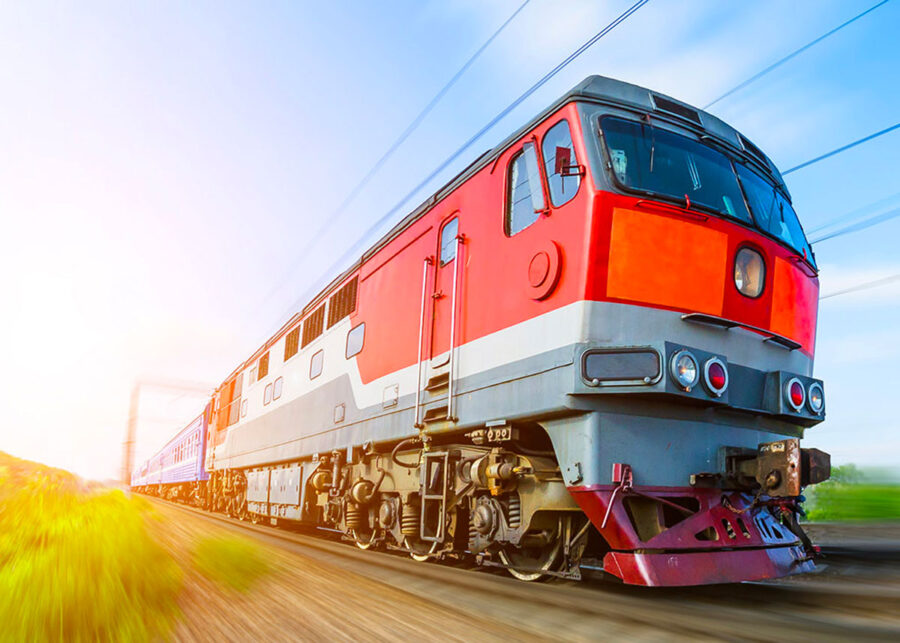
There’s a big difference between train types. Diesel trains—still common on non-electrified routes or in rural areas—burn fuel directly and emit more CO₂ per kilometer. They beat planes or old cars, but if you’re aiming for the lowest emissions, they’re not ideal.
Electric trains, when running on clean electricity, glide quietly and leave only a faint environmental trace. That’s especially true in Western Europe. Modern electric trains even brake smartly, recapturing energy instead of wasting it as heat.
I once took an old diesel train from Munich to a tiny village, and you could literally smell the difference. Not all train travel is created equal. For truly green journeys, look for fully electrified routes and check if the country’s energy mix is mostly renewables.
Factors Affecting Bus Emissions
Buses can be surprisingly efficient when they’re full and running on modern engines—especially on routes where rail isn’t an option. The main things shaping a bus’s carbon footprint are how many people are onboard, what kind of fuel it uses, and whether it’s an urban or long-haul service.
A packed intercity coach with modern diesel, biofuel, or even electric power will trounce old gas-guzzlers any day. City buses stop and start a lot, which burns more fuel, but long-distance coaches cruise along more efficiently.
Weirdly, I’ve noticed that the amount of luggage people bring on long coach trips can bump up emissions too—heavier loads mean more fuel burned per kilometer. Not something most travelers think about when booking a bus ticket, but it adds up.
If you want the lowest emissions and the smoothest ride, pay attention to the age of the bus fleet and how full the bus is. The greener your bus—and the more friends you bring—the cleaner your journey.
Train Travel and Sustainability in Europe
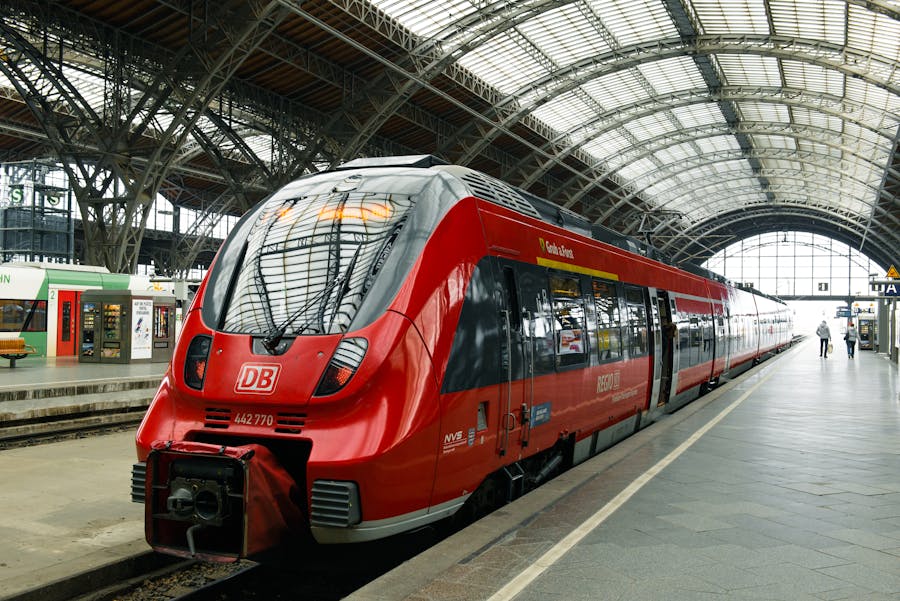
Train journeys in Europe have a reputation for being both eco-friendly and practical. From iconic high-speed lines to reliable local railways, you’ll find that European rail is built for greener travel and connects you to city centers and scenic rural spots.
National Rail Networks and Cross-Border Connections
If you’ve ever looked at a map of European train lines, it’s almost like a spider’s web. Every country has its own national rail—France’s SNCF, Germany’s DB, and so on—and the magic is, they all connect.
No matter where you start—Paris, Berlin, Rome—you can hop from country to country without setting foot on a plane. Electric trains, which are the norm in Western and Central Europe, mean you’re skipping a lot of the pollution that comes with diesel buses or cars.
For example, a trip from Amsterdam to Vienna crosses at least four countries, and you never have to deal with border checks or endless security lines. I genuinely think it’s one of the only ways to travel long distances across Europe and still feel like you’re not trashing the planet.
When you go overland instead of flying, you dodge most of the carbon emissions that make air travel such a problem. Sure, you can find some wild flight deals on unbeatable flight deals, but I usually stick with trains—especially for comfort and eco reasons.
Eurostar and Other High-Speed Rail Services
Jump on the Eurostar from London and you’ll rocket through the Channel Tunnel, landing in Paris or Brussels in just a couple of hours. Eurostar is electric, high-speed, and kind of a superstar in the world of sustainable transport.
It’s much “greener” than flying across the Channel, and with speeds over 300 km/h, it can actually beat planes on total travel time for city-center to city-center routes. Other high-speed lines crisscross the continent: France’s TGV, Spain’s AVE, and Italy’s Frecciarossa all connect major cities at dizzying speeds.
These electrified services use modern trains designed to be quiet, efficient, and (on most routes) powered by clean energy. The real perk? You see the countryside flash by instead of clouds outside a cramped plane window.
Greta Thunberg took trains across Europe during her climate campaign, and her choice made a pretty big statement about sustainable travel. That definitely gave high-speed rail a PR boost, not that it really needed one—it’s already fast, reliable, and eco-smart.
Rail Travel as a Sustainable Choice
If you care about your carbon footprint, trains are usually your lowest-impact option for getting around. Studies by the European Environment Agency show that rail travel generates way fewer greenhouse gas emissions than both cars and airplanes.
Even buses, as efficient as they can get, usually can’t beat electric rail when it comes to CO2 per passenger mile. You don’t have to be an eco-warrior to make a smart travel choice.
Choosing the train for your next trip means you’re pitching in for cleaner air and less noise in cities and the countryside. And honestly—sleeping cars, panoramic windows, digital e-tickets that ditch the paper waste, maybe even a pastry in a station café? That’s travel that just feels good.
Bus Travel’s Environmental Impact in Europe

Bus travel plays a big role in daily life and longer journeys across Europe. The carbon footprint of bus transport is actually quite varied depending on the type of service and fuel used, plus where you’re traveling.
Urban vs. Intercity Buses
Right in the thick of city life, you’ll spot urban buses weaving through traffic and stopping every few blocks. A lot of these buses still run on diesel, but lately, you might have noticed those whisper-quiet electric models sliding by—kind of wild how much less noise they make.
Urban buses can leave a bigger carbon footprint per passenger, especially when they’re half-empty. That stop-and-go driving and all the idling at red lights really add up. Still, when rush hour hits and every seat’s full, they easily outshine diesel cars for emissions. Cities like Paris and Berlin are making a real push for greener fleets, swapping out those old smoky diesels for hybrids and electrics, although it’s a slow process.
Now, intercity buses—those longer rides between towns or across borders—cruise on highways at steady speeds. They usually run more efficiently per passenger, since they fill up and don’t stop as much. If you’re comparing to driving a diesel car alone, hopping on an intercity bus cuts your carbon footprint quite a bit, especially with the newer, cleaner models.
Fuel Types: Diesel, Electric, and Hybrid Buses
Let’s get into fuel types, because not all buses are built the same. Diesel still dominates older fleets; you can’t really miss the rumble or that unmistakable smell when you’re waiting at a stop on a cold morning.
Diesel buses have a bigger carbon footprint than most alternatives, but at least they move a lot of people at once. That said, cities are rolling out electric and hybrid buses on busy lines, and the difference is noticeable. If a city’s electricity comes from renewables, electric buses can seriously slash emissions. Hybrids are a step up from diesel but still lean on fossil fuels. The trade-off? Electric buses cost more up front and can be pricier to maintain, so the change is gradual.
Hydrogen buses are also starting to appear, though they’re still rare. I caught one in London once—it was so quiet it felt almost futuristic. With more fuel options, cities can customize their fleets to fit local needs and budgets.
The Role of Coach Networks in European Mobility

Coach networks are honestly the unsung heroes of European travel. If you’ve ever grabbed a FlixBus or Eurolines ride across borders, you know these aren’t your average city buses.
Coaches connect cities and countries, usually for a fraction of the train ticket price. These long-distance buses are often newer and more efficient, carrying loads of passengers for hundreds of kilometers. For travelers, coaches open up routes trains don’t touch—which, surprisingly, happens more than you’d expect. They’re also a lifeline in rural areas that trains just don’t reach.
While most coaches still run on diesel, some companies are experimenting with hybrids and electrics, especially on shorter routes. Here’s a quick comparison:
| Coach | Diesel Car | Electric Vehicle |
|---|---|---|
| Seats 30-60 | Seats 4-5 | Seats 4-5 |
| Lower CO₂/passenger | Higher CO₂/passenger | Lowest CO₂ if powered by green energy |
Choosing a coach often means lower emissions per person than driving, plus you get the bonus of relaxing, reading, or just watching the world go by—no parking stress, no tolls.
Comparing Trains, Buses, and Other Travel Modes
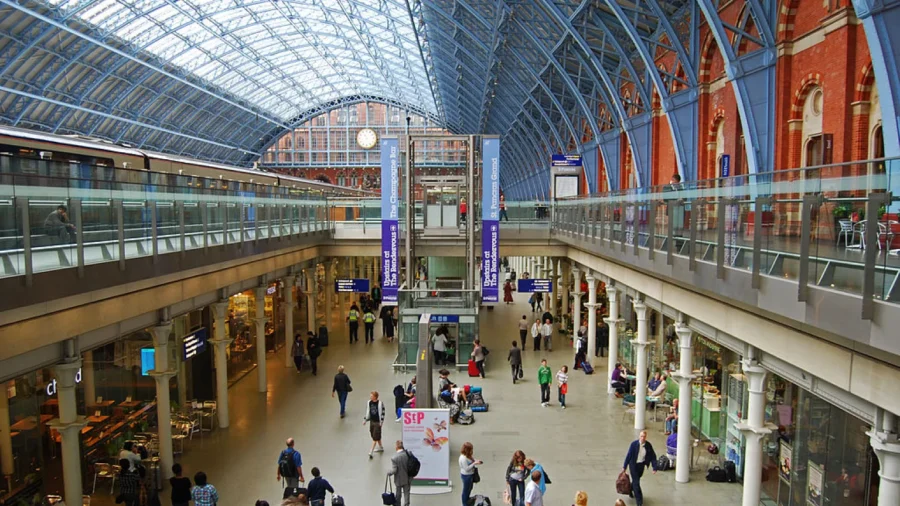
If you’re serious about shrinking your carbon footprint while exploring Europe, it’s worth weighing your travel modes. Trains and buses can surprise you with just how efficient they are, especially when you stack them up against flying or solo driving.
Trains, Buses, and Aviation: Carbon Footprint Comparison
Let’s cut to the chase—trains almost always come out on top for low carbon impact, especially on medium and long distances. Most European trains run on electricity and can carry hundreds of people, so emissions per person drop fast.
Buses do a solid job too, especially when they’re full. On certain routes, they can even rival trains for eco-friendliness.
But air travel, especially short flights, is a different story. Planes burn a ton of fuel on takeoff, making short hops especially bad for emissions. If you’re ever torn between options, just remember: in Europe, the train is almost always your greenest bet.
Cars, Ferries, and Alternatives: Broader Perspective
Driving a petrol car solo? It’s usually the least green option for solo travelers. Sure, a full car helps, but public transport still wins for emissions. Ferries are a mixed bag—some new ones are cleaner, but older or bigger ferries can be serious polluters.
Cycling and walking? Nothing beats them. They’re nearly carbon-free, aside from the energy you burn. Trams and city undergrounds can also stay pretty low-emission, as long as the grid is clean.
If you’re thinking about a car, car-sharing is a small improvement over driving alone, but still falls short compared to public transit. And as tempting as those last-minute cheap flights can be, flying always comes out worst for emissions.
Impact of Domestic Flights and Short Haul Journeys
Domestic and short-haul flights in Europe rack up a much higher footprint per kilometer than pretty much any other option. Even if you ignore the airport hassles, the emissions from short flights are hard to justify, especially on under-1000 km trips where fast trains exist.
One short flight can easily double or triple the emissions of the same journey by train or coach. If you want to travel greener, skipping short flights is a huge step.
Even when you’re connecting smaller cities without direct trains, you’ll usually find a mix of regional trains, buses, or trams that keep your footprint way lower than flying. Sure, it might take a bit longer, but honestly, it’s often a more laid-back and scenic way to go—and the planet benefits.
Data Sources and Tools for Emissions Comparison
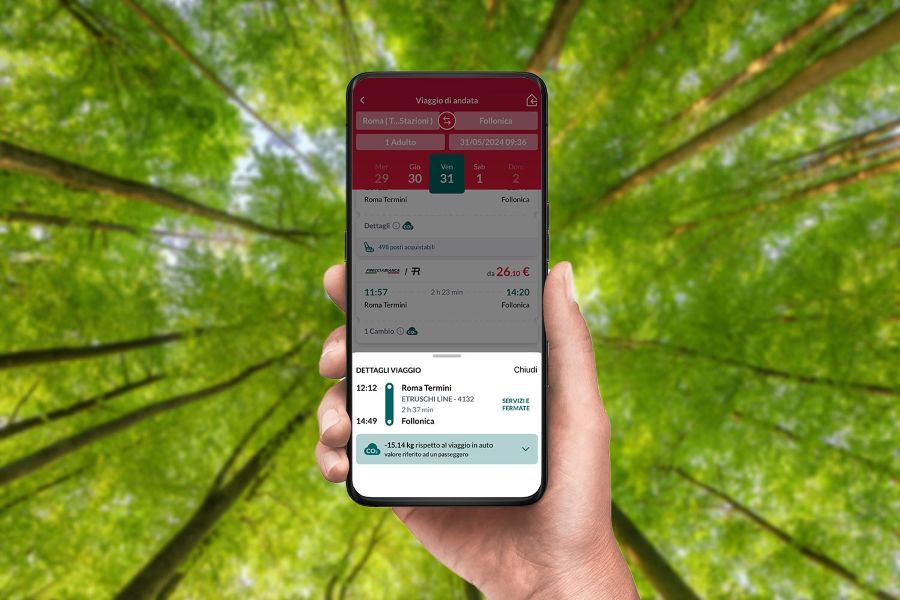
Trying to figure out the real impact of your train or bus trip in Europe? Knowing where the emissions data comes from—and who’s crunching the numbers—makes a difference. A few tools and agencies can help clear up the mess, and even shape how Europe tackles climate change.
Ecopassenger and Other Emissions Calculators
If you haven’t tried EcoPassenger yet, give it a spin. You plug in your route and travel mode—train, bus, or car—and get a detailed breakdown of your trip’s environmental impact.
It spits out numbers for CO2, energy use, and other pollutants. The International Union of Railways runs it, so trains get a fair shake. Other calculators are out there, but EcoPassenger feels the most Euro-centric to me. It’s handy for specific trips since it does the math per person and includes both direct and indirect emissions. Just a heads up: these tools are only as good as the data you put in, so if you’re planning a big eco journey, double-check with official figures.
European Environment Agency Data Insights
The European Environment Agency (EEA) has years of emissions data, broken down by region, country, or even city. You might expect dry reports, but honestly, there’s some fascinating stuff buried in there.
The EEA tracks real-world emissions, not just estimates. They publish annual reports and interactive charts, letting you compare trains and buses over time. I’ve definitely lost an afternoon or two poking around their databases. The best part? These numbers actually guide EU climate policy, so they’re taken seriously. If you want to put your travel choices in context, EEA data is the gold standard.
European Green Deal and Policy Impacts
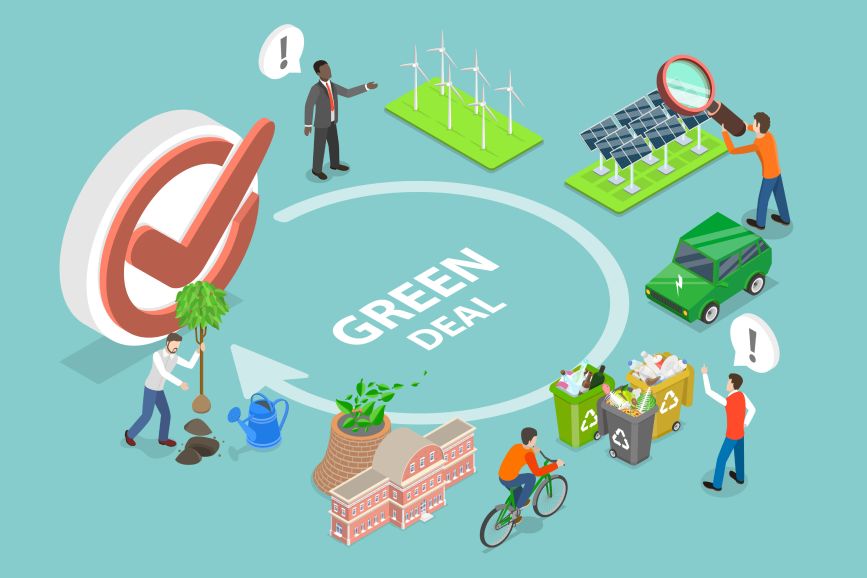
Big-picture, but it matters—the European Green Deal is the EU’s plan to tackle climate change, cut greenhouse gases, and push for sustainable transport. It’s not just talk; this policy is changing how buses are fueled, how trains are powered, and even what data gets reported.
Thanks to the Green Deal, greener travel options keep popping up—think new hybrid buses and faster electric trains. Transit companies now have to report accurate emissions data, so you’re less likely to get greenwashed. Watching old diesel buses disappear in favor of sleek electrics makes these policies feel real. If you’re serious about low-carbon travel across Europe, keep an eye on how the Green Deal is changing your options.
Frequently Asked Questions
Carbon emissions in European travel can surprise you once you dig into the details. A handful of factors really change how green your trip ends up, especially when you start comparing trains and buses on actual routes.
What factors influence carbon emissions when comparing train and bus travel in Europe?
How the vehicle gets its power is huge. Trains in Europe often run on electricity, and in places like France or Switzerland, that’s mostly nuclear or hydro—so, much cleaner. Buses usually burn diesel, which adds more carbon per mile.
Distance, speed, and the vehicle’s age all matter. Newer electric trains usually win over older trains or buses for emissions. Route choice and how full the vehicle is can quietly tip the scales, too.
How does the carbon efficiency of train travel compare to bus travel for long-distance journeys within Europe?
You might assume buses would beat trains since they’re smaller, but electric trains—especially high-speed ones on busy routes—are usually more efficient over long distances. They move way more people at once, and with clean energy, emissions stay low.
I’ve spent nights on trains from Paris to Berlin, sipping questionable coffee and watching the world blur by, and honestly, the environmental savings feel like a bonus. Not quite the same vibe when you’re stuck behind a diesel bus, right?
Can opting for trains over buses significantly reduce a traveler’s carbon footprint?
Absolutely, especially in countries with cleaner electric grids. Compared to diesel buses, electric trains can cut your travel emissions by a good margin. Plus, it’s nice not arriving smelling like diesel.
Friends who switched their bus commutes for regional trains say they feel better and, apparently, a bit more virtuous. Every little bit helps, right?
What advancements in train technology have been made to reduce CO2 emissions in European rail travel?
There’s honestly some cool tech happening. Operators are switching to renewable-powered electricity—solar, wind, even hydrogen-powered trains are popping up.
Not every country is moving at the same pace, but if you’re into new tech, it’s worth digging into eco-friendly locomotives. I’m also loving the return of night trains—sleep while you travel and leave a lighter mark.
How do occupancy rates affect the relative carbon footprint of traveling by train versus bus?
It’s not just about the vehicle—how full it is makes a big difference. Even a state-of-the-art high-speed train isn’t green if you’re the only one riding. Sometimes, a packed bus can be more efficient.
On popular train routes, seats usually fill up, especially during holidays. More passengers per trip means lower emissions per person. So, as much as I enjoy an empty carriage, a crowded one is actually doing the planet a favor.
What are the environmental benefits of using trains for freight instead of buses in Europe?
Switching cargo from roads to trains really lightens the load on highways. You’ll immediately notice less traffic, less engine noise, and air that’s just a bit cleaner.
Trains haul an impressive amount of stuff at once—shipping containers, raw materials, the works. I remember riding alongside a freight wagon in Austria; honestly, I was struck by how quietly it moved.
If you ask me, trains—especially the electrified ones—leave trucks and buses in the dust when it comes to environmental impact. Why clog up the roads when you can glide through the countryside with a fraction of the emissions?


